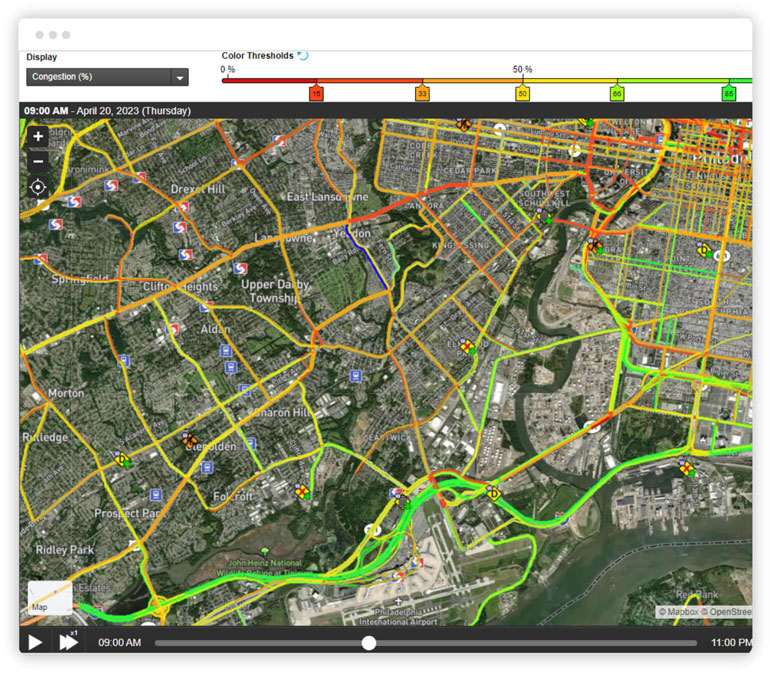A Data-Driven Approach to Electric Vehicle Infrastructure Planning
Why EV Charging Station Placement Matters
As electric vehicle (EV) adoption trends accelerate globally, academic transportation research is shaping how cities plan sustainable infrastructure. Strategic placement of EV charging stations not only supports the shift away from fossil fuels but also helps reduce urban air pollution, improve traffic flow, and provide affordable transportation for underserved communities.
For universities, research institutions, and policymakers, the question becomes: Where will EV infrastructure have the greatest environmental and social impact?

Leveraging Data for Smarter EV Infrastructure Decisions
The National Performance Management Research Data Set (NPMRDS)—available through the National Transportation Data & Analytics Solution (NTDAS)—provides a robust foundation for alternative fuel station planning.

Key Data Features:
- High-resolution traffic data (average speeds, congestion levels, travel time delays) at 5–60-minute intervals
- Percent Congestion Trend Maps for visualizing traffic bottlenecks and patterns
- Performance measures sensitive to congestion fluctuations, ideal for pinpointing high-impact EV station locations

By applying these metrics, researchers can identify high-traffic corridors and congestion hotspots—areas where EV charging stations could significantly reduce emissions and improve mobility.

Integrating Transportation and Environmental Data
When NPMRDS traffic data is combined with air quality monitoring and renewable energy availability, academic researchers can model the environmental benefits of proposed EV infrastructure projects. This enables:
- Targeted placement in renewable-powered zones
- Quantification of air quality improvements
- Equity-focused planning for underserved communities
Such data fusion transforms academic transportation research into actionable insights that directly inform sustainable infrastructure development.

Driving the Future of Sustainable Mobility
By integrating transportation analytics, environmental science, and urban planning, academic institutions can guide decision-makers toward EV adoption strategies that deliver measurable outcomes. This approach aligns with the broader goals of building resilient, livable communities and accelerating the transition to cleaner, more equitable mobility systems.


